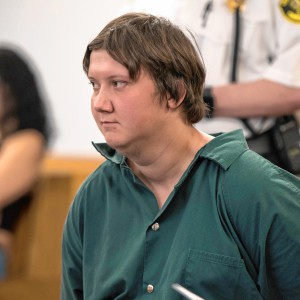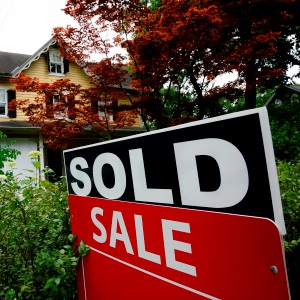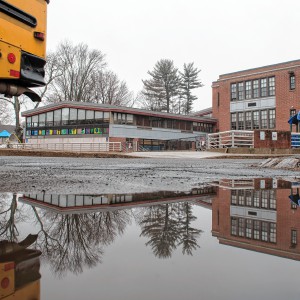Guest columnist James Lowenthal: Lighting the rail trail is misguided and harmful
| Published: 03-09-2023 5:07 PM |
Stephen Donnelly’s opinion piece about the Manhan Rail Trail [“Light on the Manhan Rail Trail,” March 6] rightly points out how important the trail is in helping Easthampton encourage active lifestyles and economic growth. It also helps the city achieve its climate goals by reducing the use of cars.
But the installation of yet more super-bright, overly blue, high-glare lights on tall poles along the trail is misguided and causes more harm than good.
The main goal for the lights is surely to provide safety — as is the case for most outdoor light at night. But safety from what hazards? If it’s tripping over bumps or potholes or slipping on ice, then levels of illumination 10-100 times lower than the new lights would be plenty. And reducing glare — the poke in the eye from poorly shielded lighting — would provide an actual safety benefit.
Or is the imagined hazard personal crime? Decades of scientific study have failed to show that more lighting actually results in less crime. In some cases it even invites crime — for example, most vandalism happens in well-lit areas where the vandals can see their target more easily. Most other rail trails all over the Valley, the state, and the U.S. are unlit, and have no significant problems with crime, despite initial concerns.
What’s worse, artificial light at night is bad for human health, animals and plants. Excessively bright, blue, poorly shielded lights like those now on the rail trail are directly linked to negative impacts on creatures from mammals, both nocturnal and diurnal, to migrating birds, insects including pollinators on which our food supply depends, fish and turtles, and everything in between.
All animals that call Nashawannuck Pond and the woods along the trail home are impacted. Light pollution is also linked to serious human health problems including disrupted sleep patterns and elevated rates of diabetes, obesity, and hormonal cancers such as breast and prostate cancer.
The insomnia that the writer refers to that sends people outside at night looking for a place to wander? It’s actually caused in part by light pollution — our eyes, brains, and even DNA are hard-wired to detect darkness at night and prepare us for sleep.
The new lights consume electricity, which is currently produced by burning fossil fuels — thus countering some climate benefits of the rail trail.
Article continues after...
Yesterday's Most Read Articles
 Treehouse, Big Brothers Big Sisters turn race schedule snafu into positive
Treehouse, Big Brothers Big Sisters turn race schedule snafu into positive
 Northampton man will go to trial on first-degree murder charge after plea agreement talks break down
Northampton man will go to trial on first-degree murder charge after plea agreement talks break down
 Area property deed transfers, April 25
Area property deed transfers, April 25
 Contentious dispute ends as Hampshire Regional schools, union settle on contract
Contentious dispute ends as Hampshire Regional schools, union settle on contract
 South Hadley’s Lauren Marjanski signs National Letter of Intent to play soccer at Siena College
South Hadley’s Lauren Marjanski signs National Letter of Intent to play soccer at Siena College
 Primo Restaurant & Pizzeria in South Deerfield under new ownership
Primo Restaurant & Pizzeria in South Deerfield under new ownership
Finally, the lights completely ruin the view of the stars and Milky Way that many nighttime visitors, human and otherwise, need, crave and love. Naturally dark nighttime is a gift of nature and it needs protection, not obliteration.
The new lights are significant new sources of light pollution, without delivering the promised benefit of increased safety. I encourage Easthampton to consider some simple fixes: dim the lights down, turn them off late at night, and add shields to direct the light down only. Then 1) adopt the Five Principles of Responsible Outdoor Lighting developed by the Illumination Engineering Society and the International Dark-Sky Association; and 2) implement an outdoor lighting bylaw, such as the model one developed by IDA Massachusetts (https://idamass.wordpress.com/), or like the ones in Amherst, Northampton, and more than 50 other cities and towns in Massachusetts that have recognized the importance of protecting natural darkness at night.
James Lowenthal is president of the International Dark-Sky Association, Massachusetts chapter. He lives in Northampton.
 Columnist Susan Wozniak: Rising costs long ago swamped hippie ideal
Columnist Susan Wozniak: Rising costs long ago swamped hippie ideal Guest columnist Rudy Perkins: Dangerous resolution pins ‘aggression’ on Iran
Guest columnist Rudy Perkins: Dangerous resolution pins ‘aggression’ on Iran David Kirk: Northampton schools spending beyond means
David Kirk: Northampton schools spending beyond means Richard Clifford: We all need to look in a mirror first
Richard Clifford: We all need to look in a mirror first
